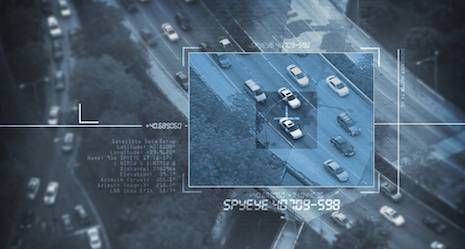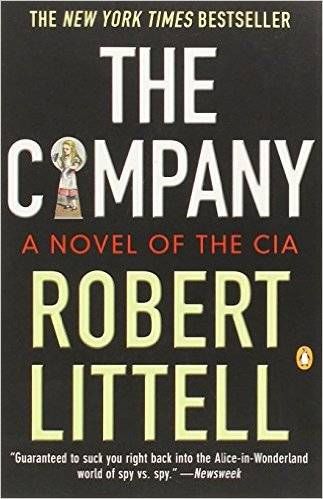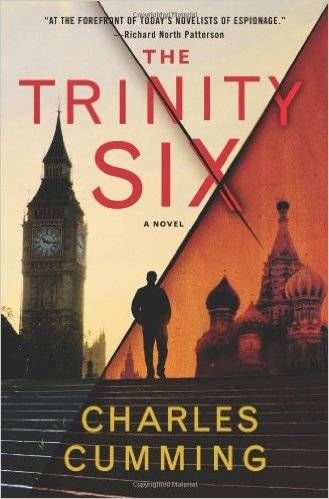
A Secret History: Learning the Past from Spy Fiction
This is a guest post from Cheyenne Comer. An academic armchair detective, Cheyenne is a PhD candidate at the University of Louisiana at Lafayette. When she’s not deciphering Cold War spy novels, she Instagrams photos of books and tea, reviews all things crime fiction at Sleuths & Spies, and dreams of one day being a Bond girl. Follow her on Twitter @sleuthsandspies.
History, much like algebra and the periodic table of elements, is something I learned with the frantic cramming of necessity, memorized the night before a test, and forgotten as quickly as each question was answered. Sure, I retained the basics – the Pilgrims, the Constitution, and an endless string of wars – but I couldn’t connect these things to our current moment in history, and I found myself extremely ill-prepared to contribute to any discussion about politics or world affairs. That is, until I started reading spy novels. By grounding their fictions in real historical events, these books provided access to and an understanding of global politics that I never would have appreciated from a dry academic lecture or a rote textbook account.
Believing I was escaping into a shadow world of undercover agents and double crosses, I consumed these novels voraciously, not realizing that like many of the characters I encountered I, too, was being manipulated. In my case, I was duped into becoming a willing student of the history of the Cold War, during which the spy novel became ubiquitous, with writers such as John le Carré and Tom Clancy documenting life during the conflict and after détente, respectively. While these big guns of spy fiction began my education, more recent post-Cold War novels, however, illustrate how the world has changed, but in many ways stayed the same, since the thaw.

Following the dissolution of the Soviet Union that occurs after Gorbachev’s putsch featured in The Company, Littell’s Legends: A Novel of Dissimulation (2005), recounts how gangsters came to power to Russia in the 1990s. Instead of featuring several different protagonists as in The Company, this novel portrays the multiple viewpoints formed from retired CIA agent Martin Odum’s different cover stories. As Odum tries to piece together his past in order to determine which cover story is his true identity, the reader learns about the rise of current Islamist terrorism when, as Dante Pippen, Odum trains Hezbollah militants in Beirut and, as Lincoln Dittmann, he makes an arms deal with Osama bin Laden in South America and hears the rumblings of Al Qaeda’s formation. Odum’s mental explorations physically bring him to Moscow, where he finally remembers his part, on behalf of the American government, in helping the oligarchs achieve supremacy, and as Martin finds himself in a desperate standoff against both KGB and CIA, the reader locates America’s precarious political relationship with Russia.
Even more significant in the ‘90s was the Persian Gulf War, which Frederick Forsyth describes in The Fist of God (1994). The novel begins with the real-life assassination of Dr. Gerald Bull, an American engineer who designed a long-range “supergun” for the Iraqi government, which in Forsyth’s version of events, he believes will be used to launch satellites into space. After he discovers his Project Babylon program is actually intended to deploy a nuclear missile, Bull is murdered by Israeli agents in Brussels. Shortly afterwards, Iraq invades Kuwait, and Forsyth takes the reader into the ground phase of Operation Desert Storm, during which American and British intelligence learn of the supergun’s existence and attempt to thwart its detonation. In his imagined scenario of nuclear armament, Forsyth highlights the very real anxieties about weapons of mass destruction that led to the 2003 American invasion of Iraq and the contentious destabilization of the Middle East.

Far removed from Russia geographically but quite close politically, present-day China is the backdrop for Adam Brookes’s Night Heron (2014), which begins with Prisoner 5995, aka Peanut, fleeing from a labor reform camp. As Peanut’s escape coincides with a growing insurgency, Brookes maps a Chinese history of rebellion and reform onto Peanut’s personal past. While Peanut gradually recalls his tradecraft to evade detection in Beijing, the reader learns not only that he was a ballistics expert recruited by the British to infiltrate and expose the Chinese missile program but also that his motivations stemmed from atrocities committed under the Mao regime in the 1966 Cultural Revolution. Covering revolts in the 1960s, 1980s, and 2000s, Night Heron introduces to spy fiction a new political locale by depicting turbulent times in Communist China.
While these novels are only a sampling, all spy novels, in a sense, are historical novels, as the genre is replete with reconstructions, recollections, and revisions to political events. Thus, they implicitly impart philosopher George Santayana’s dictum, “Those who cannot remember the past are condemned to repeat it.” Therefore, the reader must operate as do the spies between these pages, accessing a fuller knowledge of history rather than learning it on a “need to know” basis.








